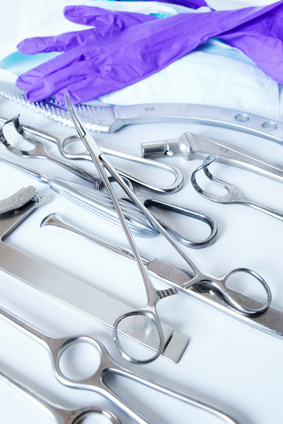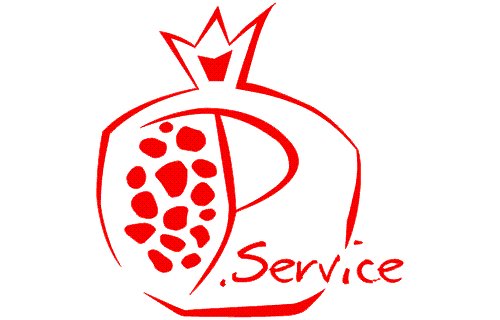- Igiene e sicurezza
- 0 likes
- 2457 views
Many times we find ourselves discussing and discussing the meaning of sterilizing, the difference with disinfecting and the most suitable equipment or product to do so. This is also because, especially in Italy, there are no mandatory refresher courses in this sense for the opening of an activity, nor the well-defined procedures that the local health authority issues to the beauty, tattoo or medical center that is at the time of 'opening. The sterilization procedures are the same for everyone but neither the instruments to be subjected to it nor the use made of them. It is for this reason that even the means to be used, such as sterilizing equipment, are not the same for everyone. So let's try to clarify what sterilization is and when it must be practiced.
What is sterilization?
The term sterilization does not refer to a single act of deep cleaning but is the final result of a complete process that aims to ensure the annihilation of living microorganisms on a surface. An instrument, an object will be considered sterile when the chances of finding a microorganism are less than one in a million.
This differs from instrument disinfection in that the latter is only capable of reducing or inactivating the number of living microorganisms that pollute an instrument. In fact, it is divided into three levels:
- Low-level disinfection: acts on the vegetative forms of bacteria and fungi, as well as on some viruses.
- Intermediate level disinfection: effective against tuberculosis and fungi.
- High-level disinfection: it also acts on spore-forming forms and on some viruses.
The sterilization procedure includes the high-level disinfection phase and other very important phases of preparation, annihilation of the spores and conservation of the instruments.
When should sterilization be practiced?
According to the law, Medical Devices (instruments) that come into direct contact with the skin or mucous membranes which can cause bleeding or micro-lesions, must be subjected, after each use, to a sterilization process. TOOLS By sterilization we mean any process, physical or chemical, which leads to the destruction of all forms of living microorganisms and other biological agents. It is important that a clear and concise written procedure is present and easily accessible in the workplace with operational protocols of the individual activities, which together constitute the sterilization method, distinguished in the execution times and in the physical spaces (decontamination - washing - disinfection etc.). The procedure must be respected and carried out by personnel trained for the purpose in order to limit individual interpretations (standard procedure). In small realities such as dental clinics, medical clinics, small surgical clinics, beauty centers, it is the employer who, based on current directives, laws, technical standards and a careful risk analysis, evaluates on the basis of his own working reality such methods and techniques used for the sterilization procedure. We remind you that there is a legal responsibility towards the alleged damage; in the event of a dispute, it is necessary to be able to demonstrate, also by means of procedures, that all the systems suitable for correct stabilization are adopted in one's own office.
TOOLS By sterilization we mean any process, physical or chemical, which leads to the destruction of all forms of living microorganisms and other biological agents. It is important that a clear and concise written procedure is present and easily accessible in the workplace with operational protocols of the individual activities, which together constitute the sterilization method, distinguished in the execution times and in the physical spaces (decontamination - washing - disinfection etc.). The procedure must be respected and carried out by personnel trained for the purpose in order to limit individual interpretations (standard procedure). In small realities such as dental clinics, medical clinics, small surgical clinics, beauty centers, it is the employer who, based on current directives, laws, technical standards and a careful risk analysis, evaluates on the basis of his own working reality such methods and techniques used for the sterilization procedure. We remind you that there is a legal responsibility towards the alleged damage; in the event of a dispute, it is necessary to be able to demonstrate, also by means of procedures, that all the systems suitable for correct stabilization are adopted in one's own office.
Individual protection
In addition to a correct sterilization procedure, it is important that the operator is protected from any risk of contagion by contact, or worse, cutting thanks to the use of protective devices. Each individual protection device must have the protection of the operator as its fundamental characteristic and be adequate with respect to the risks to be prevented. The most commonly used PPE are: gloves, protective clothing, respiratory protection devices (goggles, visor, etc.).
Environmental hygiene
To disinfect and sterilize an instrument it is necessary that the environment in which the procedures are carried out (work surfaces, trays, etc.) have already been previously cleaned and disinfected. Surfaces can be easily contaminated by aerosol production from rotating and / or ultrasound instruments. This makes it essential to properly and accurately disinfect work surfaces with broad spectrum disinfectant products. Furthermore, it is important to ensure adequate ventilation and ventilation of the rooms. Staff must use dedicated clothing, proceed with hand hygiene between procedures, keep nails short and avoid artificial nails, do not wear jewelry (rings, etc.).
The sterilization procedure
The most consolidated sterilization procedure in the literature and which in any case may differ according to the individual operating situations is the following:
1. collection / transport
2. decontamination
3. manual washing: cleansing - brushing - rinsing - drying
4. washing in the ultra-sound tank
5. disinfection: chemical disinfection - thermal disinfection
6. automatic washing with instrument washer
7. control and maintenance of the devices
8. packaging (SBS) 9. unpackaged medical devices
10. autoclave loading (or dry heat sterilizer)
11. sterilization
12. tests to be performed in the steam sterilization process
13. unloading of sterile material
14. storage of sterile devices
15. traceability of the procedure
16. control test log
17. personal protective equipment (PPE)
18. environmental hygiene and behavioral rules
Text taken from: www.ordermedici.bz










